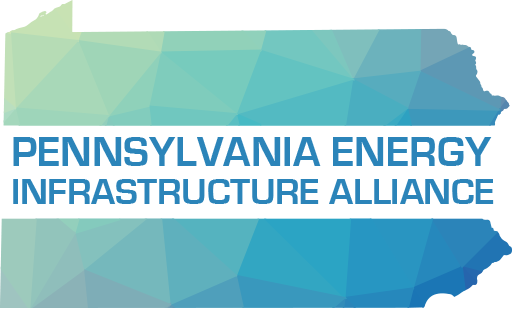Spotlight PA ran a two-part series highlighting the Mariner East Pipeline that traverses 350 miles of Pennsylvania.
While no large infrastructure project is pretty, Mariner East has received a tremendous amount of media coverage, some of which has been unfounded and/or unfair to say the least. The series by Rebecca Moss and Spotlight PA highlights some of the past coverage while also providing more substantive reporting, shining a light on some of the reasons for controversies leveled by anti-pipeliners against the pipeline developer, Sunoco and Energy Transfer.
Public safety is a top priority of the project. Despite this, many who are opposed to the project for ideological reasons like to call out the project for being a potential threat to those who live along the pipeline. The reporter accurately states that “the likelihood of a fatal accident is low. Residents near the line are more likely to die in a car crash or house fire.”
The pipeline developer has taken heat from some public officials and anti-pipeliners because state law precludes them from sharing all detailed information about the threat posed by the project and specific plans around emergency preparedness. Moss correctly highlights the 2006 law that then Gov. Ed Rendell signed called the Public Utility Confidential Security Information Protection Act, which allows “utilities and the state to keep ‘confidential security information’ secret if, in a company’s estimation, it might be used for criminal or terrorist acts. Violating the law comes with criminal penalties and up to a $5,000 fine.” The law was passed in response to the 2001 terrorist attacks in Pennsylvania and New York for the purpose of preventing the possibility of providing enemies a blueprint for how to exert maximum harm here at home.
Sunoco has gone above and beyond what is necessary when it comes to preparing for response scenarios and training first responders if ever an emergency occurred. “Sunoco has sent more than 324,000 public awareness brochures…and trained just over 2,000 first responders in Pennsylvania.”
Some were even highlighted in Moss’ articles saying that first responders have what they need.
“We don’t necessarily need to know all of the specifics,” Randy Padfield, director of the Pennsylvania Emergency Management Agency, said in an interview. Padfield said an overall understanding of the consequences related to hazardous materials incidents, like a train derailment, is sufficient. He said confidentiality provisions, which have prevented state and local agencies from accessing sensitive Sunoco documents about Mariner East, are unlikely to impede their work because they don’t need that level of detail.
…
Some county emergency planners told Spotlight PA they had all the information needed to plan for a natural gas liquids pipeline emergency, and they touted a good relationship with Sunoco. Others said they didn’t need more information for Mariner East than for other pipeline or energy-related emergencies, because they used the all-hazards framework. The “chances of something going awry with an underground pipe are very, very slim. If something goes wrong, you go out and assess the scene,” said Jeffrey Yates, director of public safety in Washington County. “You can’t sit there and plan for every potential scenario. You have to know what actions to take in any event.”
…
Mike Cattuti…said if something goes wrong with Mariner East, the township would rely on the general training it has done to prepare for large incidents, like a potential nuclear accident at nearby Three Mile Island.
…
Bill James, deputy director of the York County Office of Emergency Management, said…hazmat team attends an annual pipeline training but has never had to request additional information from Sunoco. “You can’t plan on every single thing that could happen,” James said. “We have a basic framework.”
…
Don Thoma, the volunteer fire chief for the last 40 years in Adamsburg, Westmoreland County, said Sunoco has been great about answering his calls and providing annual training, which it does statewide for affected counties. Thoma said he appreciates that the company provides his team information he otherwise might not get from higher levels of state or municipal government. He even called the state Public Utility Commission to tell it how impressed he was by Sunoco. “We have far more calls for accidents, medical calls, so, quite frankly, every day is getting trained for those,” he said. “But it is not that we take training for these pipelines lightly.”
As a part of Sunoco’s intent to go beyond what is required to plan for any type of emergency, they have provided Mariner Emergency Response Outreach (MERO) trainings for over 2,000 first responders across Pennsylvania. Greg Noll, a hazardous response expert runs the MERO trainings and said, “What we try to get across or emphasize to the student is it doesn’t matter what the products are that are involved, or its container…here’s a process that can be applied across the board for a myriad of emergencies, not just looking at pipeline incidents.”
Beyond training, Sunoco has also agreed to pay for any county and/or township that wants to develop their own local emergency response plan.
Rebecca Moss’ reporting was one of the most objective looks at some of the controversies drummed up by pipeline opponents. Bottom line is that Mariner East is very close to completion, which is a positive development for a variety of reasons. For local residents, it means that heavy construction equipment will be moved out of their neighborhoods, but for Pennsylvanians as a whole completion of Mariner East will ensure the safe transport of energy resources locally, regionally, and beyond. Nobody thinks about where the heating source comes from in mid-January when you set the thermostat, but Mariner East will help ensure that consumers have the energy they rely on in an efficient and affordable way.
